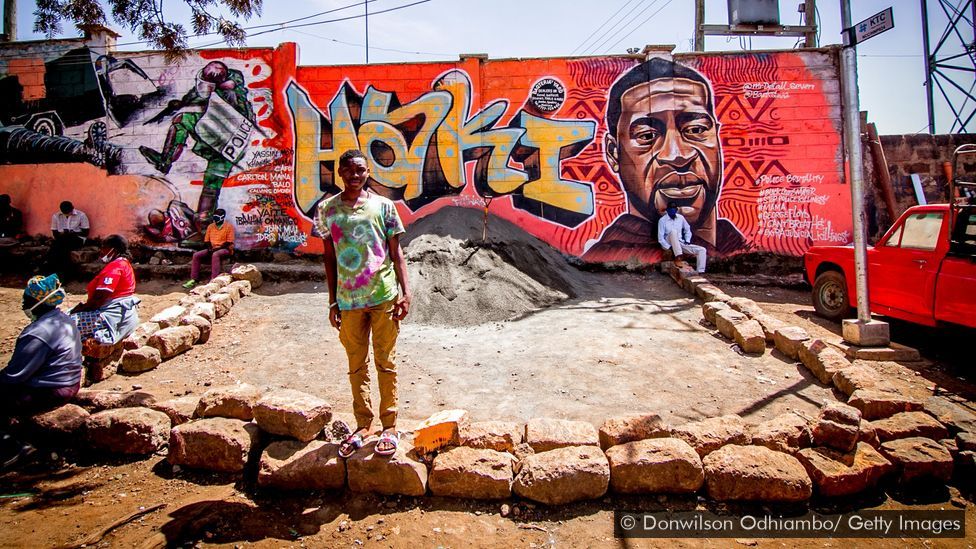Over the summer of 2020, a portrait recurred on city walls across the world: an image of the black US man George Floyd, who was brutally suffocated to death by police officer David Chauvin on 25 May, 2020. Most of these portraits were based on Floyd’s 2016 selfie, taken from his own Facebook account; many referred to the torment of his killing, and his final words. Thousands of miles from the US, protests numerous graffiti tributes to Floyd appeared in European cities and in Asia, Africa and Australia.
More like this:
– The music movement that took on racism
– Striking images of black struggle
– The images inspired by protest
In Karachi, truck artist Haider Ali painted a portrait inscribed with English tags (‘#blacklivesmatter’) and Urdu song lyrics (“This world doesn’t belong to white or black people, it belongs to the ones with heart”); in Idlib, northwestern Syria, Floyd appeared among the war-ravaged ruins; in Nairobi, he was depicted alongside the Swahili word “haki“, meaning ‘justice’ (in a work by Kenyan artist Allan Mwangi, aka Mr Detail Seven); Palestinian artist Taqi Sbatin painted Floyd on the West Bank barrier; in Berlin’s Mauerpark, Floyd was portrayed on the wall by Dominican-born artist Eme Freethinker, alongside an array of iconic black US figures: Malcolm X, Martin Luther King, Angela Davis, Jean-Michel Basquiat and the musician Prince.
